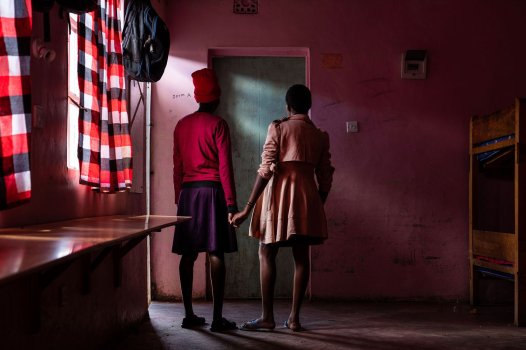K
Kathleen Martin
Guest
At the girls’ rescue house down the quiet end of a dusty road in Narok County, Kenya, there are girls who are friends, and then there are Purity and Lucy. Sisters, they both say. Purity is 17; Lucy, 19. Where Purity is soft-spoken and shy, Lucy is gregarious and funny, with expressive eyebrows and a sardonic affect. When she smiles—and she smiles a lot—the corners of her mouth turn almost vertical, and her cheeks, still freckled with teenage acne, go full and flush. Purity is slender as tall grass, with glowing skin and a gap in her lower teeth that she habitually pokes her tongue through. Both grew up in traditional Masai communities, in different areas that are within striking distance of Masai Mara National Reserve, a game park that, in normal times, draws hundreds of thousands of visitors a year. Neither one’s parents went to school; Purity and Lucy were set to be among the first generation of girls in their communities to graduate from high school, maybe even from college.
Lucy wants to study the moon and become an astronaut. Purity has dreams, too, but she doesn’t talk about them much anymore. Both girls left their homes years ago, fleeing forced marriages and, for Lucy, the genital mutilation that traditionally precedes matrimony in their communities. Purity was cut when she was 10. (For privacy reasons, I’m identifying them and some others in the story only by first name or a pseudonym.)
When Covid-19 led the Kenyan government to shutter schools and ban large gatherings, the operators of the rescue house—a nonprofit shelter that offers girls a base where they can live and from which they can go to school—had little choice but to comply. The risk that a deadly disease could rip through the crowded dormitories and infect scores of girls with little access to health care was too high to do otherwise. The operators secured promises from the girls’ families that they would be treated well and sent them home. Purity and Lucy left in March 2020, returning to homes where their fathers drank heavily, often became violent, and routinely kicked them out, forcing the girls to sleep in the bush. Each felt lucky when a man from the community approached her, offering a little food, shelter, and money. Almost a year after leaving the rescue house, Purity and Lucy returned, both just weeks away from giving birth.
Continue reading: https://www.bloomberg.com/news/features/2022-01-06/how-covid-is-impacting-young-girls-and-women-around-the-world
Lucy wants to study the moon and become an astronaut. Purity has dreams, too, but she doesn’t talk about them much anymore. Both girls left their homes years ago, fleeing forced marriages and, for Lucy, the genital mutilation that traditionally precedes matrimony in their communities. Purity was cut when she was 10. (For privacy reasons, I’m identifying them and some others in the story only by first name or a pseudonym.)
When Covid-19 led the Kenyan government to shutter schools and ban large gatherings, the operators of the rescue house—a nonprofit shelter that offers girls a base where they can live and from which they can go to school—had little choice but to comply. The risk that a deadly disease could rip through the crowded dormitories and infect scores of girls with little access to health care was too high to do otherwise. The operators secured promises from the girls’ families that they would be treated well and sent them home. Purity and Lucy left in March 2020, returning to homes where their fathers drank heavily, often became violent, and routinely kicked them out, forcing the girls to sleep in the bush. Each felt lucky when a man from the community approached her, offering a little food, shelter, and money. Almost a year after leaving the rescue house, Purity and Lucy returned, both just weeks away from giving birth.
Continue reading: https://www.bloomberg.com/news/features/2022-01-06/how-covid-is-impacting-young-girls-and-women-around-the-world

